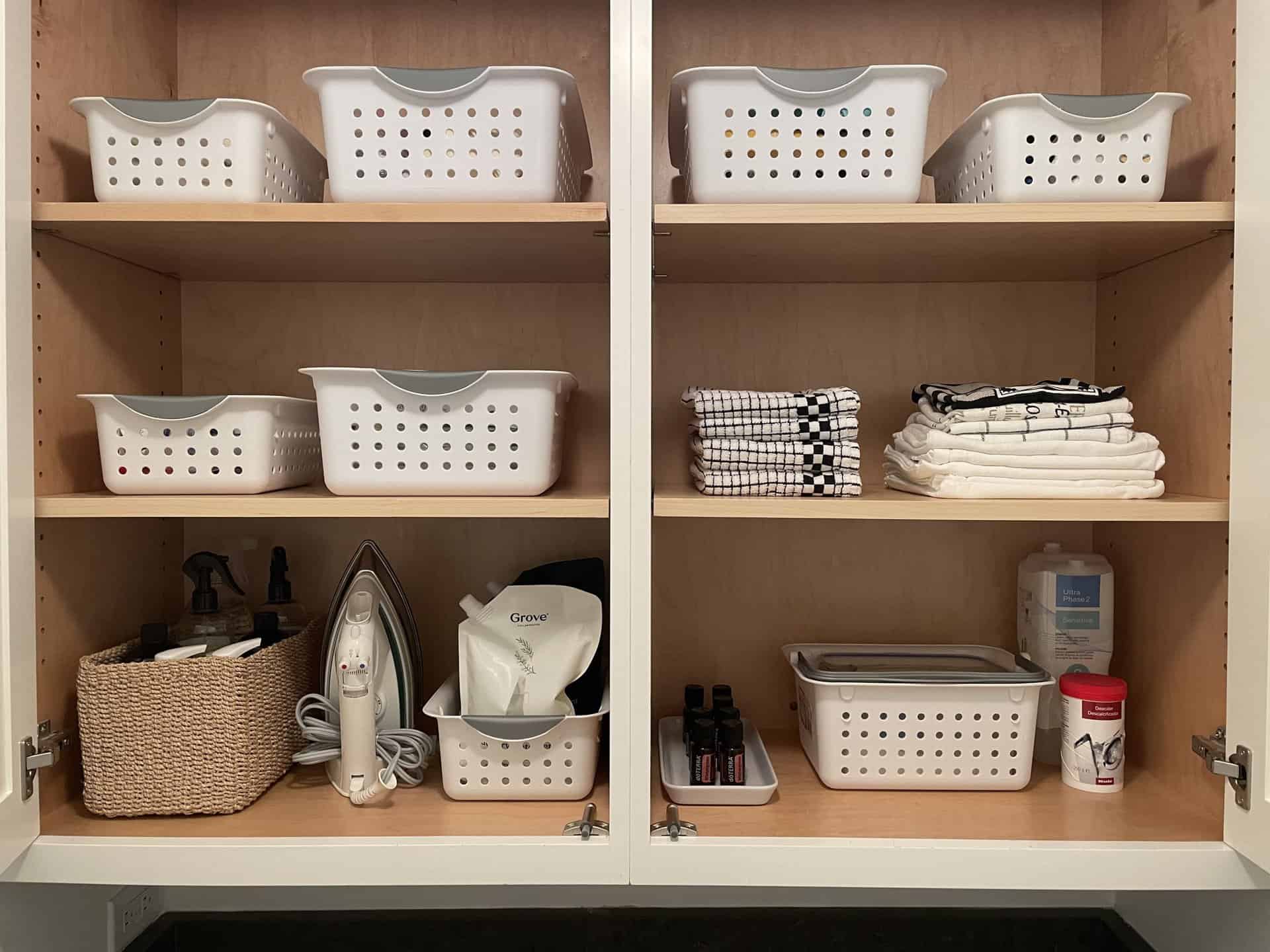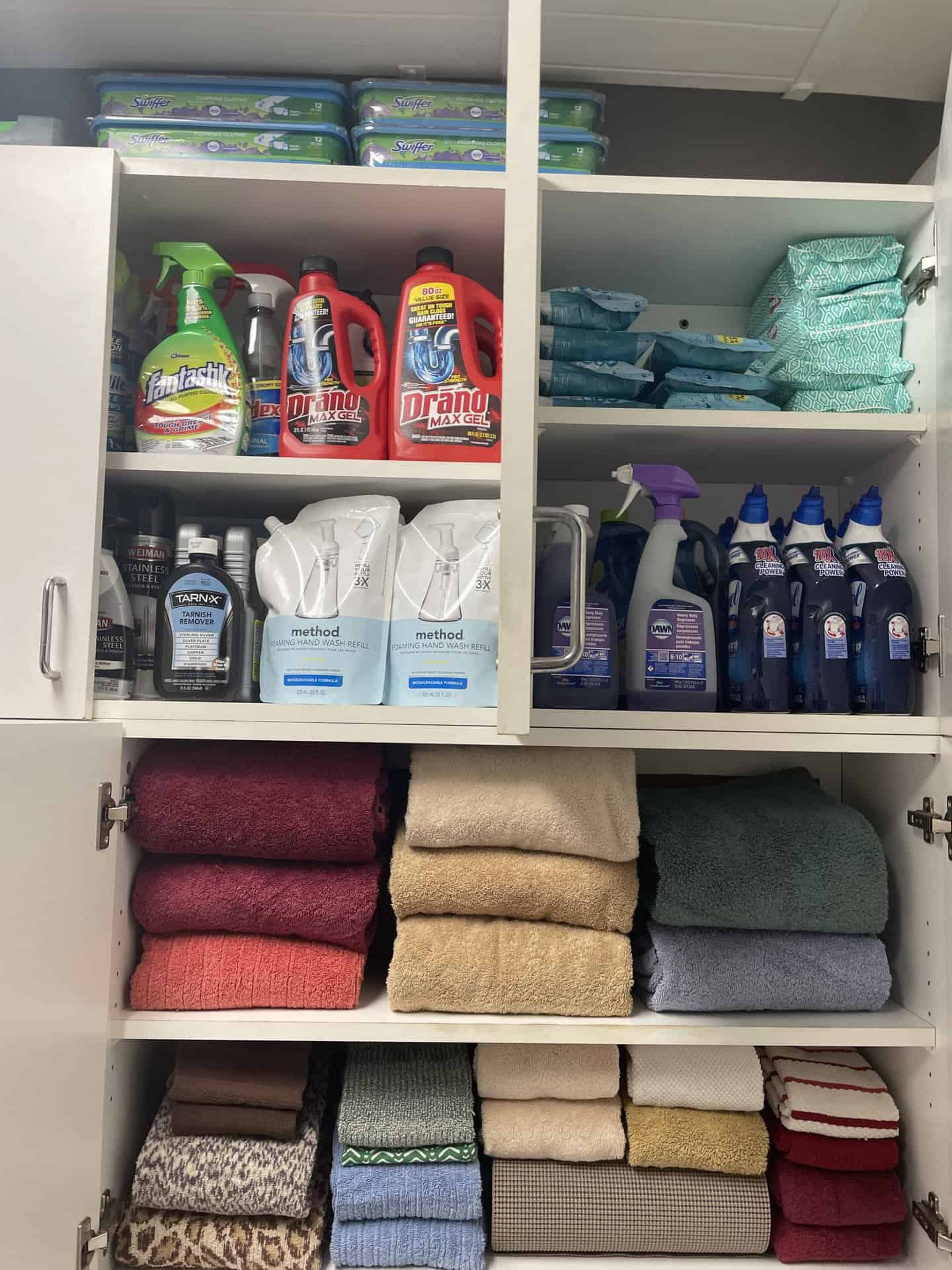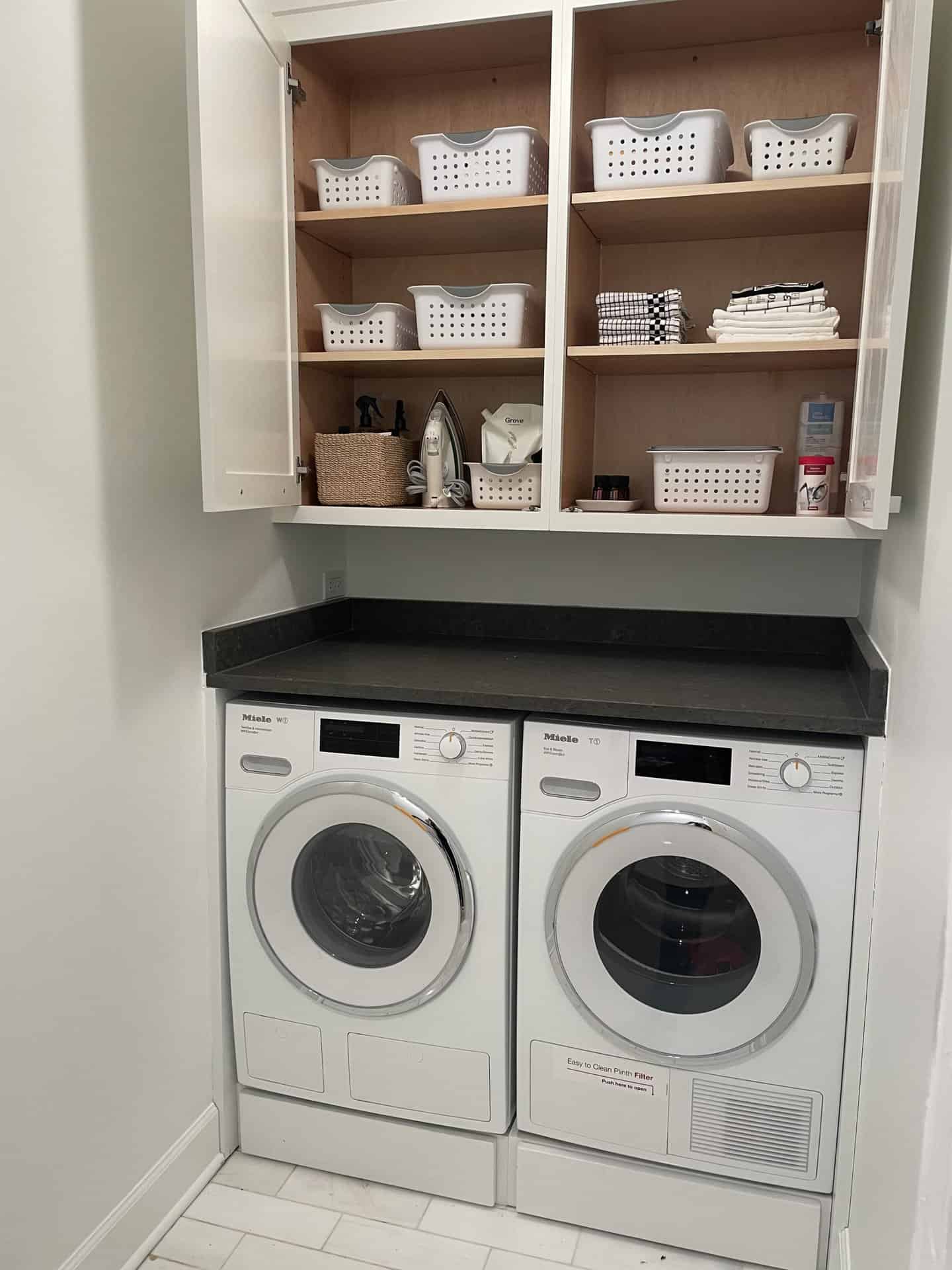
Laundry Rooms Rule
Clothing and linens are washed, dried, and possibly ironed and repaired in a laundry room, depending on the extent of amenities occupying the space. In the past, laundry facilities in a typical house were located in the basement. Therefore, many older homes lack adequate space for bulky washers and dryers in the common living areas. However, consumer demands over the years have created the need for home builders to place laundry rooms on other floors for accessibility and convenience. Today, entire rooms are dedicated to laundering clothes, sewing, and ironing them. For these reasons, there are many different ways laundry rooms or areas are placed in a home. Some laundry rooms are in the basement with a chute system delivering dirty laundry from the upper levels. Main-, second-, or third-floor laundry areas can be in a separate, dedicated laundry room; camouflaged in another room, such as the kitchen; hidden in a closet; or openly combined with another room, such as a mudroom or bathroom.
Generally, laundry rooms are hard to organize since they are usually small, busy places with numerous activities such as sorting, folding, hanging, stacking, storing, and ironing clothing. Another factor that adds to the challenge of organizing the laundry room is that homeowners tend to hide clutter because it’s usually tucked away and out of sight. The goal should be to relocate abandoned articles to a proper storage location or devise a space for them in the laundry area. No matter how small a laundry area may appear, there are ways to utilize the room to function well, given the proper design and organizers. Before starting your laundry-room organizational project, consider the most expensive aspects of the space, which are the washer, dryer, sink, and cabinetry, when present. Having to replace or relocate these things within the room will dramatically add to the budget, but it may also increase the room’s overall operation and the home’s value.
Should you plan to replace your appliances or cabinetry or alter plumbing arrangements but can’t get to it immediately, you can still set organizational goals for the space. For the time being, seek inexpensive, adjustable storage accessories that could be repurposed elsewhere at a later date, if needed. Organizing the space can generate a solid roadmap for successfully outfitting your laundry facility when the time is right. The following information offers different ways to arrange appliances, cabinets, and sinks in a laundry room and detailed information about available options, given your budget, taste, needs, and space.

Washers and Dryers
The focal point of a laundry room is the washer and dryer since their functions are the sole purpose of the space. Washers and dryers come in four different configurations:
- Freestanding front-load washer and dryer
- Freestanding top-load washer and dryer combinations
- Stacked washer/dryer combination
- All-in-one washer/dryer

Front-Load Washers and Dryers
The front-load washer paired with a matching dryer will give you the freedom to create a long countertop above these appliances and design easy-access cabinets above them. The convenient countertop space provides the necessary place to fold, stack, and sort laundry—a front-load washer has energy- and water-efficient features but needs particular care to prevent mold formation.


Top-Load Washer and Dryer Combinations
The traditional top-load washer opens from the top of the machine, which can interfere with using the space to fold, sort, and stack, mainly when used often. This may bring about a need to create a folding station elsewhere. Organizing space around a top-loading machine requires more creativity because it requires a vertical clearance, while the dryer mate needs horizontal clearance. If you are unsure whether you want to change from a top to a front-load washer eventually, you’ll not have to change the room’s floor pattern since the horizontal dimensions of both machines are roughly the same size. Therefore, designing and laying out your laundry facility with a top-load washer is not a wasted effort, should you swap it out for a front-load option in the future. The only area that may need an organizational adjustment if you make that change is the space above the washer. A top-load washer needs wall clearance for the door that opens up at the top of the machine, whereas a front-loading one does not.
Stacked Front-Load Washer/ Dryer Combination
A stacking washer and dryer combination is a washing machine with a dryer unit. Stackable laundry sets are sold together and offer a seamless look. Such units tend only to handle small loads, however. You can also build your stackable laundry set by selecting your washer and dryer, and you can pick units with larger capacities; a special kit would then be needed to place the washer and dryer together. The significant advantage of stacking laundry units is that they occupy half the floor space of typical side-by-side units. This type of space savings is necessary for some laundry rooms. Using extra floor space for other items, such as folding tables, sewing machines, ironing boards, hanging rods, shelving, or cabinets, can also be advantageous.
All-in-One Washer/Dryer
When space in your home or apartment is scarce, an all-in-one washer and dryer is a sensible solution. It’s the size of a single-unit appliance, designed to wash and then dry. The advantage of this type of machine is the space-saving feature. However, washing and drying several loads of laundry will stretch out the time of a laundry chore versus using two machines simultaneously. Therefore, these all-in-one machines work best in households with few members or as a secondary laundry machine suitable in places like a master bedroom closet, bathroom, weight room, or spare hallway closet.


Laundry-Room Cabinetry
Although expensive, cabinetry is the neatest, dressiest, and most efficient way to store laundry items. Cabinets add value to your home and keep laundry items accessible when built around the machines. Cabinet counters are great for sorting, stacking, and folding laundry. An extensive number of cabinet organizers are on the market for upper and base cabinets that also include drawers, making it easy to store any laundry item effectively. Some of the best cabinetry laundry storage accessories are built-in ironing boards, pullout trash bins, pullout hampers, pullout drying racks, and mounted clothing rods. The only tricky part about cabinets is designing them around your washer and dryer. Technological advancements may change the shape and size of replacement machines. It’s a chance you take when incorporating cabinets with current appliances.

Plumbing
Adding or relocating a washer, dryer, or sink to an existing laundry room may require a plumbing expense. In certain circumstances, it’s best to keep plumbing fixtures in a renovation project stationed where they are to avoid a plumbing relocation expense. A budget is often better spent on swapping out the sink, upgrading a washer or dryer, or adding cabinetry. However, in some cases, it may be feasible to relocate a washer, dryer, or sink to use the space more efficiently, even if an expense is incurred. Adding a utility or floor sink can be a great asset to a laundry room because it can serve other purposes, such as cleaning bulky items like sports equipment, big pots, tools, and even pets. The sink can be used to fill buckets and water plants. And when the laundry room is near an entry point, a water source can also accommodate outdoor needs, such as cleaning automotive items or filling watering cans.
What Belongs in the Laundry Room?
It’s essential to determine what is most helpful to keep in your laundry room since everything logical in it may not necessarily fit. Everyone has a unique set of laundry items they need in this space, and these belongings must receive priority storage. For example, laundry-related items, such as knitting supplies or clothing art kits, are the articles that are important only in households with members who regularly use them in the laundry room area. In this case, these items would take storage precedence over other items. The following are the most common items found in a laundry room. Decide which items are the most significant, depending on how you use your laundry space, and rate the others in order of importance. Use a prioritized list to plan your space, offering key placement for essential items, which means keeping them close to where they’re used. Invest in the best organizers for the significant items, and you may opt for more budget-minded storage essentials for the less necessary belongings.
